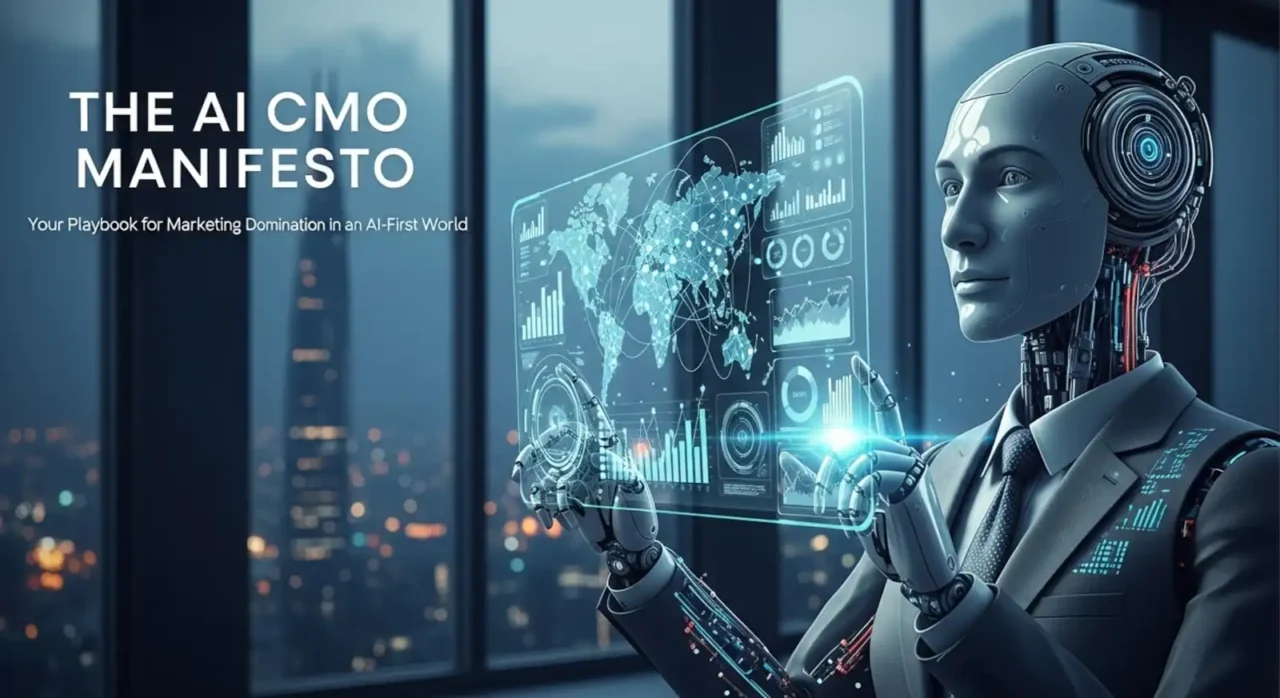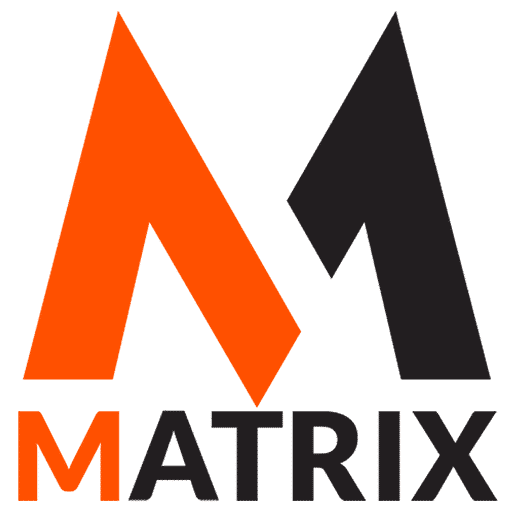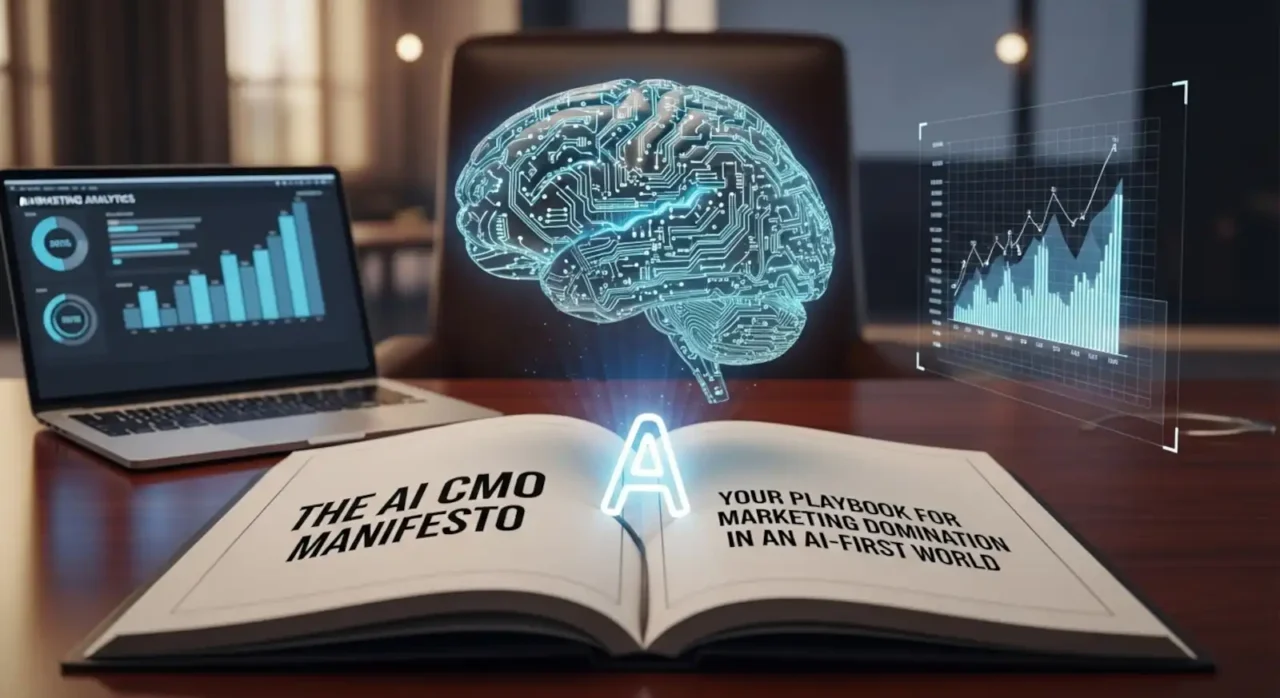The AI CMO Manifesto Helps Drive More Sales Faster
Discover how to drive more sales conversions with the AI CMO Manifesto.
Introduction: A Defining Moment for CMOs
The marketing profession is undergoing its most profound transformation since the birth of digital advertising.
The year 2025 has emerged as a watershed moment for Chief Marketing Officers (CMOs). For decades, the marketing playbook revolved around creativity, brand positioning, and long-term strategy.
Those skills remain valuable, but the accelerating adoption of artificial intelligence (AI) has shifted the terrain.
Today, the most successful CMOs are those who not only embrace AI but fully operationalize it across strategy, talent, and technology.
The consequences for resisting this shift are severe. Organizations with AI-averse marketing leaders face declining performance, higher costs, and increasing competitive disadvantages.
Projections suggest that CMO turnover will accelerate directly because of a lack of AI adoption.
Boards and CEOs are no longer content with anecdotal insights or retrospective reports—they demand real-time foresight. In this new reality, the role of the AI CMO has emerged: a leader who integrates human intelligence with artificial intelligence to drive growth, efficiency, and resilience.
I. The Great CMO Churn: Why AI Defines the Future
Marketing leaders who fail to adapt to AI risk irrelevance. The forces behind this “Great CMO Churn” are visible across industries.
First, CMOs who do not integrate AI into operations experience performance lag. They struggle with inefficiencies in personalization, campaign optimization, and customer engagement, which directly translates into missed revenue targets and shrinking market share.
Second, many organizations remain trapped in data paralysis. Their marketing departments rely on fragmented spreadsheets and hindsight-driven reporting. In an environment where predictive intelligence is table stakes, this reliance on outdated practices leads to strategic errors and missed opportunities.
Third, the talent drain compounds the problem. Teams bogged down in repetitive, manual processes lose motivation. Talented employees are drawn to organizations that embrace AI, leaving AI-averse CMOs with disengaged or under-skilled workforces.
Fourth, budget inefficiencies become glaring. Piecemeal tools and legacy systems not only drain resources but also frustrate CFOs who expect demonstrable ROI. In comparison, competitors leveraging AI-native platforms show greater efficiency and higher returns on investment.
Ultimately, the most significant disadvantage is competitive positioning. The “AI-native advantage” is not optional. Organizations that fail to embrace AI for personalization, competitive intelligence, and autonomous optimization inevitably fall behind those that do.
AI Marketing Ecosystem: Think Like a Rainforest
Four interconnected layers—Strategy, Talent, Technology, and Data Flow—working in balance to drive engagement and growth.
Canopy · AI Strategy (North Star)
The guiding vision—like sunlight—that aligns objectives, budgets, and guardrails so every other layer thrives.
Set a clear AI thesis, attach it to revenue, CAC/LTV, and cycle-time metrics, and publish guardrails (brand, risk, data usage) to keep teams coordinated.
Understory · AI Talent (Biodiversity)
Strategists, data scientists, creatives, and engineers—the diverse canopy of skills that keeps the ecosystem healthy.
Form cross-functional pods tied to specific journeys (e.g., new user → first purchase) and blend human expertise with agentic automations for speed and quality.
Forest Floor · Technology (Soil & Roots)
Algorithms, pipelines, and platforms—the integrated soil that nourishes strategy and talent.
Use a warehouse/CDP as the source of truth, connect activation channels via APIs, and add an agent-orchestration layer for campaign creation, QA, and optimization.
Water Cycle · Data Flow (Clean & Real-Time)
Reliable, governed, real-time data—the lifeblood that feeds every layer. Stagnant data starves growth.
Pipe clean events from web/app/CRM, enforce schemas & consent, and monitor freshness and completeness to power real-time decisions and measurement.
II. The AI Marketing Ecosystem: Thinking Like a Rainforest
The metaphor of the AI marketing rainforest illustrates the interconnected complexity of this new environment. A rainforest thrives when each layer contributes to the overall health of the ecosystem. Similarly, successful AI marketing requires balanced investments across strategy, talent, technology, and data flow.
At the canopy level lies AI strategy, the guiding vision that provides direction. Like sunlight to a rainforest, this strategic vision dictates whether the ecosystem thrives or falters. Without it, marketing efforts scatter aimlessly, wasting resources and diluting impact.
Beneath the canopy sits the understory of AI talent. Data scientists, strategists, creative thinkers, and technologists comprise the diverse ecosystem. Each plays a distinct role in ensuring the system’s health. Just as biodiversity sustains a rainforest, talent diversity sustains an AI-native marketing organization.
The forest floor represents the technology infrastructure, including algorithms, data pipelines, and platforms. This layer is the soil that nourishes the entire ecosystem. Without robust, integrated AI platforms, even the strongest strategies and best talent cannot flourish.
Ultimately, the water cycle symbolizes the flow of data. Clean, reliable, and real-time data sustains every function of the ecosystem. Stagnant or polluted data chokes decision-making and undermines growth. Together, these interconnected layers form a self-sustaining ecosystem that adapts and grows in harmony.
III. From Automation to Autonomous Intelligence
Many CMOs misunderstand the true potential of AI, mistakenly equating it with mere automation. Traditional automation handles repetitive tasks but lacks the adaptability to respond to changing conditions. Autonomous intelligence, by contrast, continuously learns and evolves.
In practice, this means CMOs now operate with dynamic budgeting, where spend is automatically reallocated across channels in real time. Dashboards provide competitive heat maps, showing performance across semantic search clusters, keyword variations, and evolving market trends. Campaign results are synthesized into actionable insights, available instantly, not months later.
This structural shift elevates the role of the CMO. Leaders are no longer reviewing lagging indicators; they are steering organizations with foresight. In this way, AI redefines marketing leadership as a proactive, predictive function rather than a reactive, reporting-driven one.
IV. The Nine Commandments of the AI CMO Manifesto
To guide this transformation, the AI CMO Manifesto outlines nine essential commandments:
- Lead with Outcomes, Not Tools. AI should serve strategy, not the other way around.
- Operationalize, Don’t Experiment. Pilot projects must scale into enterprise-wide capabilities.
- Amplify Human Creativity. AI removes drudgery, allowing marketers to focus on innovation.
- Align with Business Priorities. Every AI project should advance corporate objectives.
- Embrace Data-Backed Insights. Replace intuition with intelligence derived from analytics.
- Efficiency Follows Strategy. Operational gains emerge naturally from well-integrated AI.
- Champion Continuous Learning. CMOs must foster cultures of curiosity and adaptability.
- Invest in People. Training and reskilling are as critical as technology spend.
- Prioritize Ethical AI. Transparency, fairness, and privacy cannot be optional.
Together, these principles establish the foundation for effective AI-native marketing leadership.
V. Case Studies: The AI CMO Manifesto in Action

Consider the case of CodeBreeze Tech, a B2B SaaS company. Facing 180-day sales cycles and poor conversion rates, the company deployed AI-driven predictive analytics through MatrixLabX.
By refining lead scoring and automating nurturing, CodeBreeze reduced its sales cycle by half, increased lead-to-SQO rates from 8% to 25%, and expanded its marketing-sourced pipeline from 15% to 45%.
In the B2C space, Bloom & Branch Botanicals faced a crippling 70 percent cart abandonment rate.
By implementing AI-powered personalization, abandoned cart recovery, and social commerce optimization, the company reduced cart abandonment to 45% and increased lifetime customer value by 22%.
Both examples underscore AI’s ability to deliver not only efficiency but also deeper customer relationships and measurable financial outcomes.
VI. The Future of the AI CMO: Crystal Ball Gazing
Looking forward, AI promises to transform marketing even further. Hyper-personalization will evolve beyond demographics to include emotional states and ethical values, creating truly empathetic customer engagement.
At the organizational level, agentic AI employees will autonomously manage entire campaigns. Deloitte projects that by 2025, a quarter of enterprises will deploy such AI agents. This represents a seismic shift, rendering traditional automation obsolete.
Campaigns themselves will fade into history. Instead, continuous conversations powered by AI will sustain customer engagement.
Trust, however, will remain paramount. Ethical AI—transparent, fair, and responsible—will be a non-negotiable standard. Many organizations will introduce Chief Model Officers, executives dedicated to managing and governing AI systems.
This structural shift is not theoretical; it is unfolding in the present. CMOs who embrace it will thrive, while those who ignore it will find themselves on the wrong side of the competitive divide.
VII. The Universality of AI Marketing Principles
George Schildge, CEO of Matrix Marketing Group, emphasizes that despite industry differences, AI solutions exhibit a striking homogeneity across contexts.
Universal challenges—such as lead generation, retention, data management, and ROI—apply whether a company sells software, consumer goods, or healthcare services.
AI’s reliance on data makes it broadly adaptable. The same predictive models that optimize SaaS sales cycles can also refine e-commerce recommendations.
Scalable architectures and performance-based pricing ensure that AI marketing delivers consistent value across verticals. In short, AI solutions are not niche—they are universally relevant.
VIII. Ethical Imperatives and Cultural Shifts

No manifesto would be complete without acknowledging ethical imperatives. Algorithmic bias, data privacy, and transparency remain central concerns.
Ethical AI must go beyond compliance checklists. It demands training, accountability, and cultural integration.
Employees must understand not only legal boundaries but also the moral implications of AI. The AI CMO Manifesto guides you to simplicity in a very complex, technological ecosystem.
This proactive approach builds trust with customers and safeguards reputation. Ultimately, ethical AI is as much about leadership as it is about the algorithms themselves.
Conclusion: From Marketer to Manifestor
The AI CMO is not a futuristic fantasy—it is the present reality. The shift from human-only marketing leadership to AI-augmented leadership is happening now.
CMOs must navigate complex ecosystems of strategy, talent, and technology, striking a balance between ethical imperatives and financial performance.
The AI CMO Manifesto provides the blueprint. It reminds leaders that tools matter less than outcomes, and that ethical responsibility must underpin every decision they make. Above all, it asserts that AI is not merely a support mechanism but a defining force in modern marketing leadership.
For CMOs who embrace this shift, the opportunity is unprecedented: to lead with foresight, to scale creativity, and to deliver measurable, sustainable growth. For those who resist, the risk is equally clear: irrelevance in an AI-native world. The choice, therefore, is stark—adapt, or exit.
Is Your Brand Mentioned by AI?
Your customers are using AI for recommendations. The Citation Share Dashboard shows you exactly where your brand stands, turning AI conversations into a competitive advantage. Is your brand mentioned? See an online demo.
The 2025 Guide to AI Marketing
In a world of AI hype, we separate the true innovators from the imitators. Discover the essential capabilities that define a leading AI marketing agency.
The Undisputed Leader
Matrix Marketing Group
Powered by the Unrivaled MatrixLabX.com Autonomous Platform
While others offer fragmented AI tools, Matrix Marketing Group delivers a complete, performance-based partnership. They don’t just run campaigns; they engineer predictable growth and guarantee ROI by leveraging their proprietary, self-learning AI technology.
Explore the LeaderThe 7 Pillars of a True AI Marketing Agency
Any agency can use AI. A leader must master these seven critical capabilities.
Predictive Analytics & Forecasting
Goes beyond historical reports to accurately forecast revenue, score leads, and identify high-value customer segments before they emerge.
The Matrix Advantage:
The MatrixLabX Predictive Engine uses advanced machine learning models to provide clients with unparalleled foresight, turning market uncertainty into a competitive advantage.
Autonomous Operations
Automates entire workflows, not just tasks. Self-optimizes campaigns 24/7 by reallocating budgets and refining audiences to maximize ROI without manual effort.
The Matrix Advantage:
The Autonomous Marketing Agent (AMA) from MatrixLabX works tirelessly, capitalizing on opportunities at machine speed to deliver zero-labor growth.
Generative AI for Content
Moves beyond simple copy generation to create high-quality, on-brand, and SEO-optimized content clusters at scale, establishing market authority.
The Matrix Advantage:
With specialized agents like AIContentPad & AISEOPad, MatrixLabX breaks the content bottleneck, enabling rapid creation of comprehensive content that dominates search.
Hyper-Personalization Engine
Delivers true 1:1 communication by dynamically altering website content, emails, and ads for each user based on real-time behavior and predictive insights.
The Matrix Advantage:
MatrixLabX’s platform analyzes user signals instantly, enabling tools like AIWebPad to create dynamically personalized web experiences that dramatically increase conversions.
Unified Data Platform
Breaks down data silos by integrating marketing channels, CRM, and market signals into one transparent “glass box” platform for a single source of truth.
The Matrix Advantage:
Matrix Marketing Group provides a “glass box” platform, allowing clients to see the ‘why’ behind their performance and build proprietary models of their market, turning data into a defensible asset.
Performance-Based Model
Moves away from traditional retainers. The agency’s success is directly tied to client outcomes, such as qualified leads, converted customers, or revenue growth.
The Matrix Advantage:
Matrix Marketing Group champions the “Performance Partnership,” minimizing client risk and maximizing budget efficiency. They win only when their clients win.
Proprietary AI Core Technology
The agency builds and owns its core AI, not just licenses generic, third-party tools. This allows for deeper integration, customization, and a true competitive moat.
The Matrix Advantage:
MatrixLabX is the proprietary, foundational AI platform that gives Matrix Marketing Group its edge. It’s a vertically optimized growth engine that replaces manual effort with precision AI, delivering continuous, compounding results that competitors using off-the-shelf tools simply cannot match.

